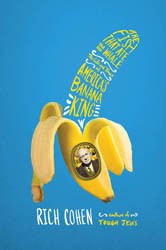By
– January 10, 2012
To recount the history of the bagel is to roll the history of Poland and Polish Jews into one ring-shaped snack. In her delightful journey through Polish history, Maria Balinska, an editor for BBC Radio, begins the bagel’s story with the great Polish king Jan Sobieski. Not only did he defeat the Turks at the gates of Vienna in 1683, but he also allowed Jews, previously barred from the guild of ring-shaped bread bakers, to make bagels.
Made of wheat flour — highly prized in a region where rye flour dominated — the bagel had ritual and aristocratic beginnings in 17th century Poland. In the 19th century, wheat flour became increasingly available, and Jewish bakers, important members of the urban Jewish working class, proliferated, selling bagels to Jews and non-Jews alike.
Bagels came to the United States with the great wave of immigration. Bagel-making was a highly skilled handcraft, but it was practiced in filthy and dangerous cellars, leading to calls for reform, to an all-powerful union, and even to mob involvement. In the 1960’s modernization— new ovens and finally a bagel-shaping machine — caught up with the bagel, starting the breakdown of the union and of the bagel’s journey to assimilation. Baking moved upstairs, and bagels were sold directly to customers. Enter the Lender family, the freezer, the toaster, and flavored bagels. By the close of the 20th century bagels were an American food.
Food critics and historians may argue that the puffed-up American bagel — cinnamon raisin to onions, bears little resemblance to the dense and chewy rings of East Europe, but it is now eaten across the United States. Maria Balinska’s history brings the bagel full circle from its home in Poland to its recent return as part of “the New York breakfast” served in a venerable Warsaw café — a story rich with surprising information and incidents. Illustrations, index, notes.
Maron L. Waxman, retired editorial director, special projects, at the American Museum of Natural History, was also an editorial director at HarperCollins and Book-of-the-Month Club.





